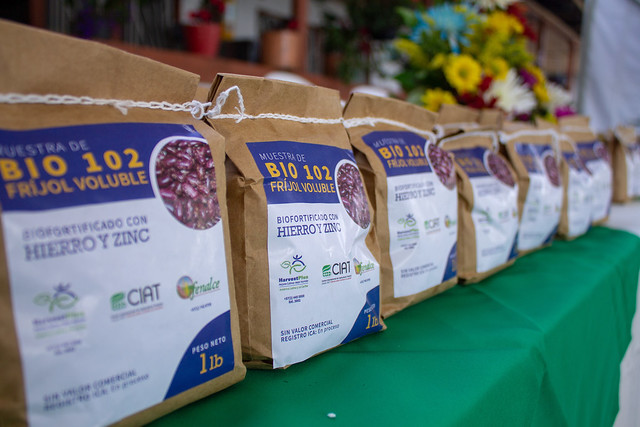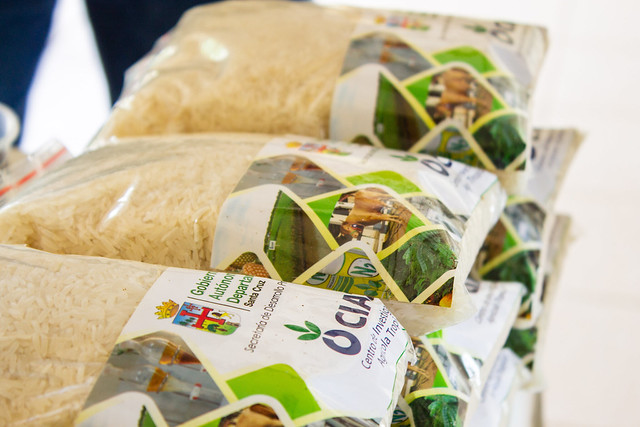Women and children in two Latin American countries are now consuming more nutritious versions of the staple foods they depend on, thanks to joint work by the International Center for Tropical Agriculture (CIAT) and HarvestPlus.
Using conventional plant breeding or agronomic practices, the crops’ nutritional content was enhanced so that when regularly consumed, they can improve nutrition and health.
Zinc Rice in Bolivia
Bolivia is the first country in Latin America to obtain zinc-biofortified rice, following only Bangladesh, India, and Indonesia. Nearly a fifth of all children under five in Bolivia are cognitively and physically stunted; zinc deficiency contributes to stunting and loss of appetite, lowers immunity, and increases the risk of diarrheal disease and respiratory infections.
The CIAT BIO-44 + zinc variety contains 38 percent more zinc than traditional rice. The variety was launched at the Center for Tropical Agricultural Research (CIAT) in Santa Cruz, Bolivia, in February with more than 600 attendees present, including Santa Cruz Governor Rubén Costas.
“Our new rice has more zinc, because the plant can absorb more zinc from the soil,” said Daniel Álvarez, food science and nutrition fellow at HarvestPlus. “HarvestPlus seeks not only to provide high-yielding varieties but also more nutritious crops.”
Iron Beans in Colombia
Nearly a third of pregnant women and children under five in Colombia are anemic; iron deficiency is a major cause. Colombia has released its first iron-biofortified climbing bean that can help address this problem.
The release was celebrated by CIAT, HarvestPlus, and the Federación Nacional de Cultivadores de Cereales y Leguminosas (FENALCE), at an event in late February at the El Diamante farm, in the department of Tolima.
 BIO102 is the name of the first biofortified climbing bean variety in Colombia suitable for planting in mountainous areas (cordillera) from 1,600 to 2,200 meters (5,249 to 7,218 feet) above sea level. Climbing beans yield three times more than bush beans, providing an eco-efficient solution for densely populated, land-scarce places; biofortified versions of these beans are also available in Brazil, Burundi, the Democratic Republic of Congo, Rwanda, Tanzania, and Uganda.
BIO102 is the name of the first biofortified climbing bean variety in Colombia suitable for planting in mountainous areas (cordillera) from 1,600 to 2,200 meters (5,249 to 7,218 feet) above sea level. Climbing beans yield three times more than bush beans, providing an eco-efficient solution for densely populated, land-scarce places; biofortified versions of these beans are also available in Brazil, Burundi, the Democratic Republic of Congo, Rwanda, Tanzania, and Uganda.
A variety of red mottled bean, BIO102 is agronomically productive, and tolerant to pests and diseases. It complements the biofortified food basket in Colombia which already contains a bush variety of iron beans called BIO101 (2016) and zinc maize variety BIO-MZN01 (2018).
“BIO102 is a variety that will contribute to the diet of Colombian men and women with up to twice as many minerals as a non-biofortified bean variety,” said Daniel Alvarez, food science and nutrition fellow at HarvestPlus. “For the average Colombian eating about 60 grams of beans per day, that means 29 percent of their total iron, compared to 17 percent if eating conventional beans.”
FENALCE carried out agronomic evaluation tests in the departments of Antioquia, Huila, Tolima, Nariño, and Cauca, where the seed initially arrived. BIO102 has already been registered by the Instituto Colombiano Agropecuario, which enables commercialization.
As Stephen Beebe, leader of the CIAT Bean Program says, “biofortification is one of the tools used to respond to the global malnutrition problem.”
